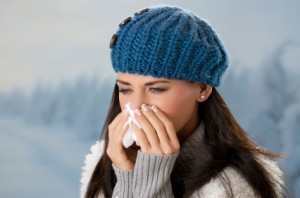Spring and summer are not the only seasons allergies act up. With winter approaching it triggers winter allergies for some of us.
Dr. William Reisacher, director of The Allergy Center in the Department of Otolaryngology at NewYork-Presbyterian Hospital/Weill Cornell Medical Center, says, “During the winter, families spend more time indoors, exposing allergic individuals to allergens and irritants like dust mites, pet dander, smoke, household sprays and chemicals, and gas fumes – any of which can make their lives miserable. And with the lengthening of the pollen season over the past several years, people with seasonal allergies might find their symptoms extending even further into the winter months.”
Winter allergies – Tips
- Wash your hands frequently, especially after playing with pets to reduce exposure to pet allergens and when returning from public places to decrease transmission of common winter viruses.
- Turn on the exhaust fan when showering or cooking to remove excess humidity and odors.
- Clean your carpets with a HEPA vacuum to decrease dust mites and pet allergen levels. Mopping your floors can be very effective as well.
- Launder your bed linens and pajamas in hot water (above 130 degrees) to kill dust mites.
- Keep pets, carpets, rugs and plants out of the bedroom to avoid dust mites and mold from decaying plants. You may also want to place an allergenic barrier around your pillows and mattress to create a barrier between dust mites and your nose.
- Spray your live Christmas tree with a garden hose before setting it up and remove all dust from your holiday decorations.
- Install high-efficiency furnace filters, which capture 30 times more allergens, and make sure your furnace fan is always on.
- Keep your indoor humidity level between 30-40% with the help of a humidifier or dehumidifier to help prevent the growth of mold and mites.
- Change the water and filters in your humidifier according to manufacturer recommendations to avoid contamination by mold and bacteria.
- Perform an indoor and outdoor survey of the house every month to look for visible mold and identify areas that are at high risk for mold formation, such as a pile of firewood close to the house or an area of the basement with a musty odor.
Mold produces irritating substances that may act as allergens (allergy-causing substances) in sensitive individuals. Furthermore, some molds produce toxic substances. Mold may not cause health effects but it may lead to symptoms in people who are sensitive to molds. Symptoms of mold allergy may include sneezing, runny nose, coughing, wheezing, tearing and redness of the eyes, and skin irritation or rash. Hopefully these tips can help you manage these upcoming winter allergies.




